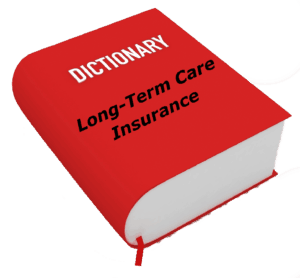The Community Living Assistance Services and Support Act (aka CLASS Act) is a voluntary, pre-funded, long-term care program that will be administered by the federal government.
It was included as part of the healthcare reform bill (PPACA-Patient Protection and Affordable Care Act) that was signed into law in March, 2010.
The CLASS Act has some similarities to traditional long-term care insurance and some differences.
Here are a few facts about the CLASS Act program:
- It is a voluntary program.
- If a participant in the program needs assistance with 2 or more Activities of Daily Living (or is severely cognitively impaired), the CLASS Act benefit will pay an average of $50 per day that can be used to pay for personal care services at home or in a facility.
- In order to enroll in the CLASS Act you must be working.
- Employers who choose to participate will automatically enroll their employees into the program and deduct the premiums from their paychecks. (Each employee can choose to opt-out.)
- In order to become vested in the CLASS Act program, you must work for at least 3 of the first 5 years that you pay premiums into the program.
- You cannot make a claim for any benefits from the CLASS Act program until you have paid premiums for at least 5 years.
- The legislation requires the program to be “actuarially sound” for a 75-year period.
- No taxpayer funds will be allowed to fund the program. All benefits must be paid solely from the premiums of those who participate in the program.
- Although funding for the CLASS Act program begins in January, 2011, the Secretary of Health and Human Services has until October, 2012 to finalize the exact benefits and premiums for the program. Employers will start enrolling their employees in 2013.
- There are no health restrictions. Anyone who is working can enroll in the CLASS Act regardless of their health history.
- The average premium for a 50-year old is projected to be about $125 per month. The premiums are based upon age. The younger you are when you enroll, the lower your premium.
- The premiums are designed to be level, but the Secretary of HHS is required to raise premiums and/or lower benefits, at anytime, in order to maintain the solvency of the program.
- Those who earn less than the Federal Poverty Level will pay only $5 per month in premiums.


